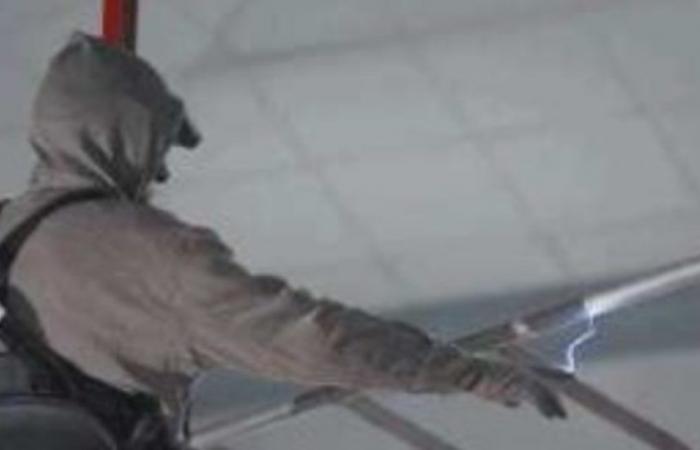Terna is the company that manages the Italian national transmission grid (Rtn) of high and very high voltage electricity and is the largest independent operator of electricity transmission networks (TSO) in Europe. It has an institutional role, of public service, essential to ensure electricity to the country and allow the functioning of the entire national electricity system: it carries out the planning, development and maintenance activities of the grid, in addition to guaranteeing 24 hours a day, 365 days a year, the balance between electricity supply and demand through the operation of the electricity system. With approximately 75,000 km of high and very high voltage lines, over 900 stations throughout the country and 30 interconnections with foreign countries, it can count on a heritage of approximately 6,000 professionals.
LIVE WORKING (LST) – Live works represent a highly qualified Terna activity. Live interventions allow particular actions to be carried out on the electrical infrastructure while keeping the plants in service: it is a technique that Terna has been adopting for years to guarantee the safety, continuity, quality and maximum efficiency of the national electricity transmission network. Thanks to the continuous study and development of methodologies, the excellent professional training dedicated to its resources and the use of ad hoc equipment and tools, Terna, with its 165 qualified operators and 50 expert technicians, carries out an average of 1,800 interventions per year. per year, with peaks of up to 3 thousand, on the approximately 75 thousand km of network, creating an annual economic benefit for the country system estimated at between 60 and 90 million.
THE VIVERONE TRAINING CENTER (BIELLA) – In recent years, Terna has acquired a level of expertise that is among the most accredited in Europe and is among the leaders in the sector for competence and professionalism. Furthermore, the company is among the few companies in Europe to have equipped itself with a specific training center for live work and to have established its own laboratory accredited according to Iec/ISO 17025 to carry out verification tests on equipment and on Personal Protective Equipment used during activities. In particular, the training center of Viverone (Biella) in Piedmont hosts one of the three electrical laboratories (the other two are in Civitavecchia, in the Municipality of Rome, and in Frattamaggiore, in the Municipality of Naples) and a training camp for training – in complete safety, in a controlled environment and with procedures tested by years of experience. A unique center in Italy, technologically advanced, a real school of advanced training: Terna’s technicians are, in fact, the only ones in Italy who can work in live mode (Lst), with specific ministerial authorization, on high-voltage power lines. high and very high voltage.
THE STUNTMEN OF THE ELECTRICITY NETWORK – The live operators are the stuntmen of the national electricity grid but, contrary to appearances, theirs is not a reckless life because they are trained to manage and control the danger safely. They are operators – a team of 165 men – who carry out their work live, that is, along the wires or on top of the large pylons that transport high and very high voltage electricity from the national transmission network managed by Terna. They work without interrupting the flow, without there being any power outages, to prevent breakdowns and ensure the best quality of service. They couldn’t do it without a rigorous and demanding training activity that allows them to move with agility and safety even 60 meters above the ground, the equivalent of a 20-storey skyscraper. To get an idea of the type of highly specialized work, you can venture the comparison of the light bulb: any bulb draws 230 V current (the transformer then reduces it to the few volts necessary for operation) from the low voltage distribution network. In the case of Terna’s transport network, the voltage moves in a range between 132 and 380 kV, a thousand times higher. The comparison helps to define the context in which these operators intervene and makes it clear how much training and experience is necessary to move while hanging from a conductor carrying 380 kV current, carry out maintenance and then return to base in complete safety. In the Viverone centre, training takes place on an infrastructure that simulates the interventions that will then be carried out in practice. It is a place with a long history because originally, in the early 1900s, it was a pumped hydroelectric power station. The center is framed by the mountains and, around the old mountain basin, Lake Bertignano, there is the training camp where the future live operators wrapped in conductive suits make the operator one with the electrical infrastructure, they train and climb to great heights under the guidance of teaching staff. Before being able to teach how to carry out live work, the latter are subjected to a certification process of the technical knowledge that they will have to transfer, which is combined with the necessary skills in the field of training with a final exam at the end in order to be certified according to the Iec/ Iso 17034. This is how you overcome fear and gain confidence in a profession that has high technicality and strict protocols. The subsequent stages allow you to acquire further, increasingly specialized skills such as being able to operate on a “basket with insulating arm” or becoming a “supervisor”, a figure similar to that of a construction site foreman. What matters most is experience: it is no coincidence that in the team of 150 live operators the age varies from 25 to over 60 years. It is a strong point of the activity because a mix is created between the physical strength of the younger ones and the transfer of knowledge made available by the older ones. Physical strength is used, for example, to move insulating rods up to 4.5 meters long; the experience is that of the supervisors who, from the ground, observe the operations and control the activity of those who work on the supports (the poles) or along the conductors inside aluminum trolleys that move in the void. When operating on the supports, the operators are all dressed in orange to make their movements more visible, while the insulating elements are colored red. It is essential, for example, not to bring the body closer than 2 meters from a 380 kV and for this reason glass fiber rods filled with polyurethane foam are used, each of which is subjected to annual checks in certified laboratories. Live work does not serve to resolve faults but to prevent them with maintenance activities aimed at ensuring the perfect state of the network and thus avoiding inefficiencies for users: users are the large generation plants that feed electricity into the network , the entire distribution network that brings it to homes and businesses, and the large industries connected directly at high voltage. Terna, in fact, inspects more than 3,500 pylons a year both by climbing the supports and through the use of drones, and 2.5 times the entire fleet of overhead power lines (175,000km) both by helicopter and through inspections on foot, and then classifies the critical points identified. At that point, if necessary, the intervention of the live operators begins.






